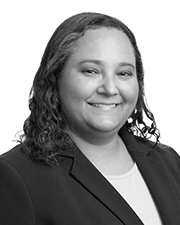


Despite current market challenges, Qualified Opportunity Funds (QOFs) remain an attractive option for investors to defer capital gains on the underlying investment and to receive other tax benefits in return for investing in real estate and businesses located in economically disadvantaged areas designated as Opportunity Zones. Before committing the time and capital required for a successful QOF, investors should reach a comfort level with both the tax mechanics and the potential upside of the investment.
The tax mechanics of a QOF investment are straightforward. The typical structure for a QOF is an LLC taxable as a partnership. Although the QOF can invest in Opportunity Zones directly, the preferred structure is for the QOF to invest in a Qualified Opportunity Zone Business (QOZB), which is another LLC taxable as a partnership. Establishing the QOF and QOZB as LLCs taxable as partnerships is preferred to using C or S corporation structures because partnerships allow for distribution of real estate to partners at the conclusion of the investment without triggering dividend treatment. The tiered QOF/QOZB structure allows the QOZB to use the working capital safe harbor, which allows the QOZB to hold the investment in cash for up to 31 months during the development and permitting stages.
Tax benefits under the current Opportunity Zones law include: (1) deferral of capital gains reinvested in QOFs until December 31, 2026, or earlier if the investment is sold, (2) basis adjustments that eliminate a portion of the gain that has been reinvested in a QOF (a 10% basis increase after a five year holding period with an additional 5% basis increase after a seven year holding period), and (3) a step up in basis to fair market value on the 10-year anniversary of the QOF investment, which means that the investor will not recognize tax on the difference between the underlying investment and the value of the QOF after 10 years. A QOF only provides tax benefits to investors if 90% of its assets are invested in Qualified Opportunity Zone Business Property (QOZBP). A QOZBP in the form of real estate must either be (1) new construction on vacant land, or (2) existing property that has been “substantially improved” — this means that the entity has doubled the original cost basis in the building (not the land) within 30 months of acquisition. Although a deferral of capital gains until December 2026 was an attractive tax benefit when the Opportunity Zone legislation was first enacted in 2017, taxpayers who invest in a QOF in calendar year 2024 are only entitled to two years of tax deferral on the underlying QOF investment. Pending federal legislation would provide a two-year extension of the tax deferral to December 31, 2028.
Evaluating the potential upside of an Opportunity Zone investment is a more nuanced process than mastering the various tax benefits. Each state has a list of designated Opportunity Zones certified by the IRS; detailed maps of these zones are easily accessible online via HUD and at the state level. Potential investors should ask themselves one question before committing to a QOF project: is the area in which the QOZBP is located likely to appreciate significantly in a 10-year period starting with the initial investment in the QOF? Increased construction costs and high interest rates pose short-term obstacles to Opportunity Zone investments, but many investors are willing to endure these challenges in light of the projected upside of the QOF investment. Although Congress’ potential extension of the mandatory capital gains recognition date from tax year 2026 to tax year 2028 might motivate some investors to contribute to a QOF because of the extended deferral of recognition on the reinvested capital gains, most investors will be focused on the potential to avoid recognizing gain on the increase in the value of the QOF after the 10-year holding period. Although it is much more difficult to quantify the potential tax benefits of the QOF investment after 10 years than to determine the tax exposure on deferred gains, most QOF investors are motivated by potential upside of a long-term hold strategy rather than the actual tax savings associated with a short-term deferral.
For investors who are focused on the benefits of short-term deferral of capital gains, the timeline is getting tight to invest in a QOF and for that QOF to invest in a QOZB that can become stabilized, refinanced and used as a source for paying deferred taxes for tax year 2026. Although the legislation to extend the mandatory recognition date to 2028 has been stalled in Congress since September 2023, the legislation shares bipartisan support and should be the subject of debate on the floors of the House and Senate in the next several weeks.
Matthew Morris is a tax partner, Laura Kaplan is a real estate partner, and Julia Royce is an associate for Sherin and Lodgen, LLP, Boston, MA.








